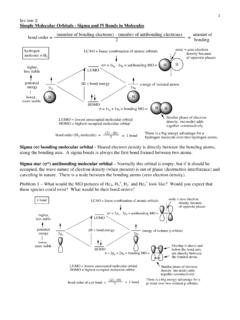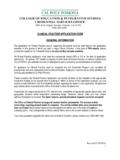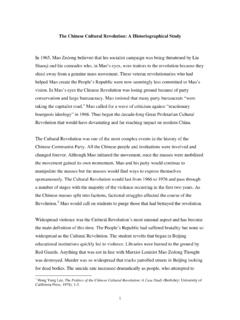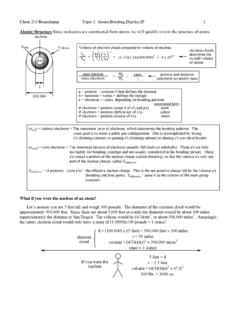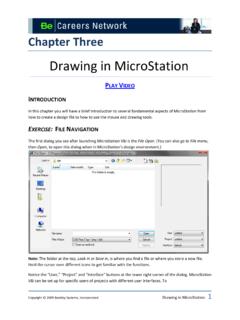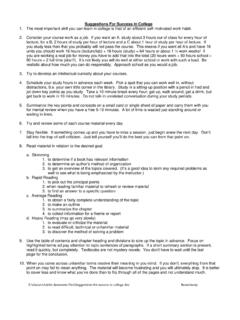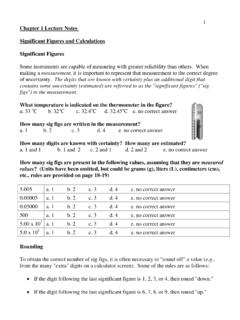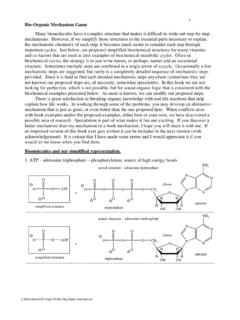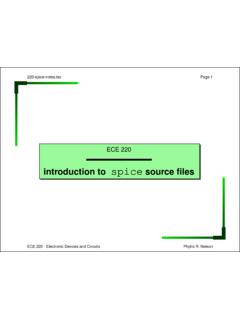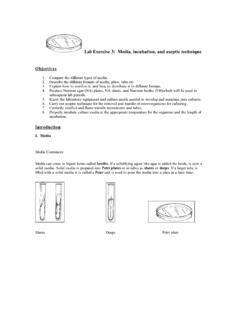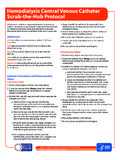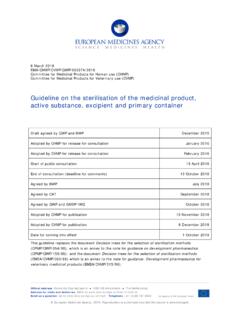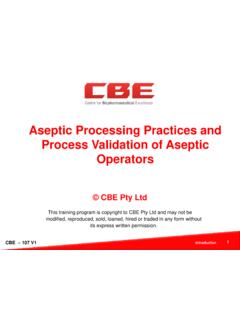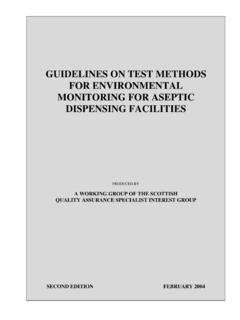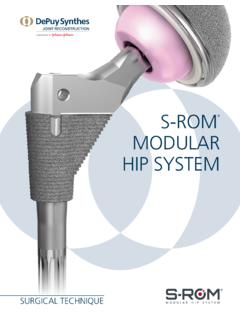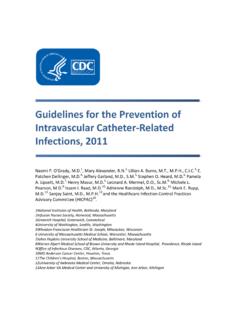Transcription of Aseptic Technique for Cell Culture UNIT 1 - CPP
1 UNIT Technique for Cell CultureThis unit describes some of the ways that a laboratory can deal with the constant threatof microbial contamination in cell cultures. Microorganisms are ubiquitous. Bacteria canbe isolated from nearly any surface including inanimate objects and human skin. Fungalspores and bits of vegetative hyphae drift into a laboratory from air conditioning ductsand open doors. Mycoplasma infections most frequently originate from improperlysterilized media or serum. At the risk of eliciting paranoia in the novice cell Culture userwho has no training in microbiological techniques, the possibility for microbial contami-nation exists everywhere.
2 Inherent with successful manipulation of cell cultures is thebasic understanding that everything that comes into contact with the cells must be sterileor noncontaminating. This includes media, glassware, and instruments, as well as theenvironment to which the cultures are briefly exposed during transfer procedures. Becausecleaning up a contaminated Culture is too frequently a disheartening and unsuccessfulexperience, the best strategy is to employ procedures to prevent microbial contaminationfrom occurring in the first unit begins with a protocol on Aseptic Technique (see Basic Protocol 1).
3 This catch-allterm universally appears in any set of instructions pertaining to procedures in whichnoncontaminating conditions must be maintained. In reality, Aseptic Technique cannot bepresented in one easily outlined protocol, but rather encompasses all aspects of environ-mental control, personal hygiene, equipment and media sterilization, and associatedquality control procedures needed to ensure that a procedure is, indeed, performed withaseptic, noncontaminating Technique . Although cell Culture can theoretically be carriedout on an open bench in a low-traffic area, most cell Culture work is carried out using ahorizontal laminar-flow clean bench (see Basic Protocol 2) or a vertical laminar-flowbiosafety cabinet (see Alternate Protocol).
4 Subsequent units within this chapter addressthese diverse considerations , sterilization and disinfection, use of antibiotics, andquality control. Where applicable, use presterilized, disposable labware and other equip-ment. The wide availability and reliability of these products has simplified cell Culture ,particularly for small-scale laboratory 1 Aseptic TECHNIQUEThis protocol describes basic procedures for Aseptic Technique for the novice in cellculture technology. One basic concern for successful Aseptic Technique is personalhygiene. The human skin harbors a naturally occurring and vigorous population ofbacterial and fungal inhabitants that shed microscopically and ubiquitously.
5 Most unfor-tunately for cell Culture work, cell Culture media and incubation conditions provide idealgrowth environments for these potential microbial contaminants. This procedure outlinessteps to prevent introduction of human skin flora during Aseptic Culture item that comes into contact with a Culture must be sterile. This includes directcontact ( , a pipet used to transfer cells) as well as indirect contact ( , flasks orcontainers used to temporarily hold a sterile reagent prior to aliquoting the solution intosterile media). Single-use, sterile disposable plastic items such as test tubes, Culture flasks,filters, and pipets are widely available and reliable alternatives to the laborious cleaningand sterilization methods needed for recycling equivalent glass items.
6 However, makecertain that sterility of plastic items distributed in multiunit packages is not compromisedby inadequate storage conditions once the package has been by Rosalie J. Cot Current Protocols in Cell Biology (1998) 1998 by John Wiley & Sons, CultureIdeally, all Aseptic work should be conducted in a laminar cabinet (see Basic Protocol 2and Alternate Protocol). However, work space preparation is essentially the same forworking at the bench. Flame sterilization is used as a direct, localized means of decon-tamination in Aseptic work at the open bench.
7 It is most often used (1) to eliminate potentialcontaminants from the exposed openings of media bottles, Culture flasks, or test tubesduring transfers, (2) to sterilize small instruments such as forceps, or (3) to sterilize wireinoculating loops and needles before and after transfers. Where possible, flame steriliza-tion should be minimized in laminar-flow environments as the turbulence generated bythe flame can significantly disturb the sterile air soap70% ethanol or other appropriate disinfectant95% ethanolClean, cuffed laboratory coats or gownsLatex surgical glovesClean, quiet work areaShallow discard pans containing disinfectantBunsen burner or pilot-activated burner ( , Touch-o-Matic, VWR)Take personal precautions1.
8 Just prior to Aseptic manipulations, tie long hair back behind head. Vigorously scrubhands and arms at least 2 min with an antibacterial lathering is more prone to loosening than removing flaking skin and microbialcontaminants. Loosely adhering skin flora easily dislodge and can potentially fall intosterile Gown appropriately. For nonhazardous sterile-fill applications, wear clean, cuffedlaboratory coats and latex stringencies may be necessary depending upon laboratory regulatory require-ments. Work with potentially hazardous agents certainly mandates additional considera-tions for safety.
9 Front-closing laboratory coats are not recommended for work withhazardous biological agents. Safety glasses should be worn by laboratory personnel whenmanipulating biological agents outside the confines of a biosafety Frequently disinfect gloved hands with 70% ethanol while doing Aseptic the gloves may initially have been sterile when first worn, they will no doubt havecontacted many nonsterile items while in that 70% ethanol may not be an appropriate agent for latex glove disinfection whenworking with cultures containing animal viruses, as studies have shown that ethanolincreases latex permeability.
10 Reducing protection for the wearer in the event of this case, quarternary ammonium compounds are more Dispose of gloves by autoclaving after use. Do not reuse. Bag and autoclavesingle-use laboratory coats after use. Bag, autoclave (if necessary), and wash otherlaboratory coats within the laboratory facility or send out for cleaning at a laundrycertified for handling biologically contaminated take laboratory clothing home for Thoroughly wash hands after removing protective Protocols in Cell Techniquefor Cell CulturePrepare and maintain the work area6.
